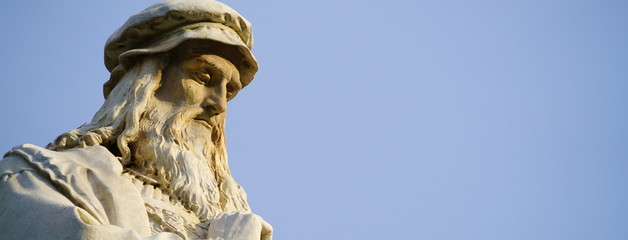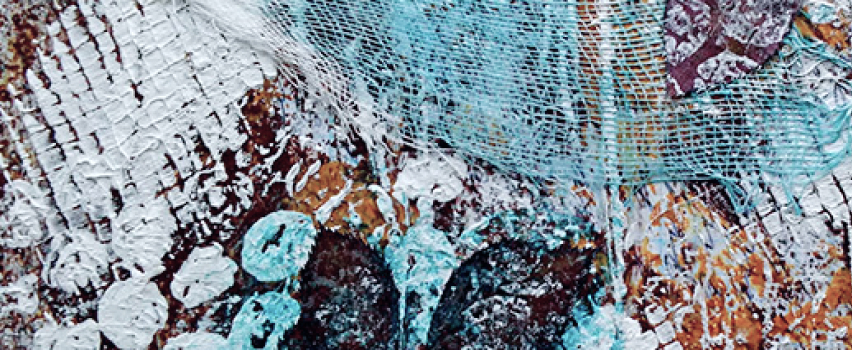
First of all, it is necessary to determine the concept of style and its interpretation in the world of fine art. After all, the definition of this word can vary significantly depending on the scope of its use. The boundaries between such concepts as style, genre and direction are quite blurred, that sometimes causes a feeling of bewilderment. What is a style in painting?
What is a style?
Style is a set of criteria united by an idea, a technique of fulfillment, and certain socio-cultural phenomena. In this regard, each style, in one way or another, is a representative of its time. Moreover, there is a close relationship between them, because often they smoothly move from one to another, being in constant development, mixing and confrontation.
Talking about directions of painting, in modern art history there is no unambiguous interpretation of this concept. Style and direction are, rather, synonyms and reflect the same criteria that unite objects of art in the world of painting.
Today, there are many styles and trends in art. It is quite difficult to track the origin and development of each of them, but you can distinguish the main ones that are the founders and combine common properties and characteristics for certain categories. Below are the main styles of painting in accordance with the historical eras that they characterize.
Main painting styles:
- Romanesque style (X - XIII) - was dominant in medieval Europe, characterized by Christian themes, observing strict symmetry of the image, hierarchy of the depicted elements and non-observance of proportions. One of the vivid examples of the Romanesque style is the illustration of “The Three Magi” from the St. Alban's Psalter.
- Gothic style (XIII - XVI) - realistic depiction of people, display of religious and everyday scenes, special attention is given to the suffering of the heroes of the paintings. Actively used in the book miniature of medieval Europe. Famous examples of works in the Gothic style are: “The Way to Calvary”, Simone Martini; “The Wheel of Ten Ages of Man”, a miniature from “The Psalter of Robert de Lisle”.
- Renaissance (XIV - XVI) - the transition from the Middle Ages to the new time, the usage of perspective is characteristic, creating a more truthful reflection of reality. Religious scenes are filled with a more mundane plot, an appeal to the plots of antiquity is clearly expressed. Today, a significant part of the most outstanding paintings belongs to this era. For example, “The Mona Lisa” by Leonardo da Vinci, “The Transfiguration of Christ” by Rafael Santi, “Tondo Doni” by Michelangelo Buonarroti.
- Baroque (XVI - XVIII) - the result of contradictions between the church and secular vision of the world, deliberate luxury, solemnity and an excess of decorative elements are characteristic. Basically, this style was used to paint portraits of the time. Vivid examples of this style are the work: "The Holy Family", Anthony van Dyck; "The Musicians", Caravaggio; "The maids of honor", Velazquez.
- Classicism (XVII - XIX) - the basis is ancient art, which was featured with laconicism and logic. It is distinguished by the idealization of the human figure and mythological subjects. Examples of famous paintings of this era are: “The Death of Marat”, Jacques-Louis David; “The Last Day of Pompeii”, Karl Bryullov.
- Sentimentalism (XVIII) – as the base is the idea of provoking an emotional reaction from the viewer, mainly sympathy or compassion. It is characterized by depicting scenes from rural life or from the life of simple "little" people. Vivid examples are: “Portrait of a young woman”, Jean-Baptiste Greuze; "Gabrielle Arnault", Louise Leopold Boilli.
- Rococo (XVIII - XIX) - arose as a result of late Baroque. Distinctive features are plentiful decor, intimate flirty character and light colors. Basically, it depicts scenes from the life of the elite, or has pastoral and mythological subjects. The most famous works in the Rococo style are: “Portrait of the Marquise de Pompadour”, Francois Boucher; “The Swing”, Jean-Honore Fragonard; “The pleasures of the ball,” Antoine Watteau.
- Romanticism (XVIII - XIX) - highlights individuality, elevates its idealistic aspirations, characterized by the cultivation of nature and human nature, fabulous and mythological motives. Also, a characteristic feature is the presence of many important small details. Among the famous paintings performed in this style: “The Duchess of Alba”, Francisco Goya; “The Death of Sardanapalus” by Eugene Delacroix; “The Horsewoman”, Karl Bryullov.
- Realism (XIX) - the main idea is a truthful and realistic image of the world. The style is characterized by sensuality, emotionality and naturalism of the heroes` image. Genre scenes from the life of ordinary people prevail. Great examples are the following works: “Fishermen of the Mediterranean”, Jules Breton; “The Weavers”, Gustave Courbet; “Breakfast on the Grass,” Edouard Manet.
- Naturalism (XIX) - the basis is the desire to reflect reality as objectively and impartially as possible, artistic knowledge is likened to scientific knowledge. A characteristic image of the physiological manifestations of a person and anatomical features, scenes of cruelty and violence. Vivid examples of this style are paintings: "Haymaking", Jules Bastien-Lepage; "The Return of the Flock", Anton Mauve;
- Impressionism (XIX) - the transfer of feelings and emotions of the author from what he saw is a fundamental idea of the style. It is characterized by images of objects without outlines, the practical absence of black color, the application of fresh strokes on the wet surface of the canvas. Artworks performed in this style are filled with lightness, sincerity of feelings and frankness of emotions. Illustrative examples are: “Water Lilies”, Claude Monet; “The Umbrellas”, Pierre-Auguste Renoir; "Jockeys Before the Race," Edgar Degas.
- Symbolism (XIX - XX) - is one of the largest directions at the turn of the XIX and XX centuries. It opposed impressionism and realism, reflected a negative attitude towards bourgeois values and expressed a desire to gain spiritual freedom. Characteristic are the desire for experiments, the mystery and understatement of plots, mysticism. The most popular topics were religion and the occult, often depicted the tragic connection between love and death. Famous paintings made in this style are: “Yellow Jesus”, Paul Gauguin; “The Wounded Angel”, Hugo Simberg.
- Primitivism (XIX - XX) - the intentional simplification of the depicted image like a child or a primitive person. The fundamental idea is the dissemination of art among the people. Examples of works in the style of primitivism are: "Actress Margarita", Niko Pirosmani; "The Sleeping Gypsy", Henri Rousseau.
- Modern (XIX - XX) - characterized by a stylization of the trends of art of different eras. This style is based on the principles of decorativeness, ornamentalism and asymmetry. It is distinguished by the rejection of angles and straight lines in favor of more natural curves. The masterpieces of modernity are: “The Kiss”, Gustav Klimt; “Dinner”, Leon Bakst.
- Modernism (XX) - the general name of the directions of art at the beginning of the XX century, which are characterized by the denial of the forms of aesthetics of the past and the expression of the artist's free views. The main goal of the styles that modernism combines is the creation of original works using new means in the visual arts.
The main directions of modernism:
- Expressionism - a subjective image of the surrounding world with a complete distortion of reality to convey a certain emotional effect. The famous expressionist was Vincent Van Gogh. His paintings "Starry Night", "Sunflowers", "Irises" and many others are world famous masterpieces of painting.
- Cubism - characterized by the use of clear lines and various geometric shapes. The fundamental idea is the expression of all the complexity and diversity of life in the simplest spatial models. Pablo Picasso is called the father of Cubism, and his "Avignon maidens" are known throughout the world.
- Futurism - the main artistic idea is to express the swiftness of movement as the main thing characterizing the modern pace of life. The image of technology and urbanism is as the main sign of modernity and the future. Illustrative examples of artworks in the style of futurism are: "The Red Horseman" Carlo Carra; “Automobile in motion”, Giacomo Balla.
- Surrealism - the main characteristic features are the removal from conscious creativity, the depiction of bizarre forms and images to convey the subconscious. It is assumed that the creation of this style is based on a combination of illusion and dream.
Actively used techniques such as:
- texturing;
- scraping;
- drip method;
- collage method;
- drawing.
One of the most prominent representatives of surrealism is Salvador Dali. His most famous works are: “The Persistence of memory”, “Dream Caused by the Flight of a Bee around a Pomegranate a Second before Waking”, “Burning Giraffe”.
- Abstractionism - based on a combination of simple and complex forms, a game of colors and planes. The combination of shapes and colors seems chaotic and harmonious at the same time. The image on the canvas is not related to reality, but conveys the ideas and feelings of the author. Abstractionism is also divided into several branches.
Types of abstractionism:
- color abstractionism - a game of colors and shades;
- geometric abstractionism - is distinguished by the presence of clear forms and lines;
- expressive abstractionism - particular importance is given to the technique of applying paints;
- minimalistic abstractionism - laconic use of colors and elements.
The world-famous masterpieces of this style are: “Black Suprematist square”, Kazimir Malevich; “Composition”, Wassily Kandinsky; “Composition with Yellow, Blue and Red” Piet Mondrian.
- Postmodernism - is a return to pre-modernist views about painting but in a new design. A characteristic feature is the combination of different techniques and styles in one artwork. This style, to some extent, equalizes all existing directions, their significance and relevance. It suggests the absence of any rules and encourages free expressionism. Vivid examples of the postmodernism artworks are: “Lady Godiva”, Remedios Varo; “Portrait of Michel Leiris”, Francis Bacon.
- Anachronism - one of the trends of postmodernism that is characterized by the author’s interpretation of the art of the past, is a kind of parody, mainly on the art of the Renaissance, Baroque and Classicism. Carlo Maria Mariani is a famous representative of this area. One of his most famous paintings is “Weightless” and “A perfect overview”.
- Underground in its broad sense — art, which contrasts itself to the limiting beliefs prevailing in public culture, rejects and violates the political, moral and social framework of behavior. An example of an underground painting is the artwork “Requiem”, Ely Bielutin, which is now in the Tretyakov Gallery, Russia.
This list includes only the most popular and relevant styles and directions in painting today, and is not complete. Most of them have their own substrates or varieties, which significantly increases the number of existing directions. The development of modern technologies and their significant impact on a person’s lifestyle also had a significant impact on contemporary art and painting, which is displayed in such areas as:
- The Photo;
For example, the artworks of the famous contemporary photographer, Annie Leibovitz.
- Digital-art;
Especially popular are the artworks of Carilla Rolando, Veronica Minozzi and Michael DeBalfo.
With each passing day, the connection between developing technologies and painting is becoming closer, giving rise to new techniques, techniques, trends and styles.

The earliest work of Leonardo da Vinci
A small painted tile caused quite a stir among the scientists of the art world. This is because some scholars believe that the recently discovered work is Leonardo da Vinci's earliest known work

Interesting facts about painting
Paintings hold the secrets of the creator. Sometimes we manage to solve them, but many of them continue to be riddles, or simply stay unnoticed.












Thank you, your review has been sent successfully.
It will be posted on the site after moderation.